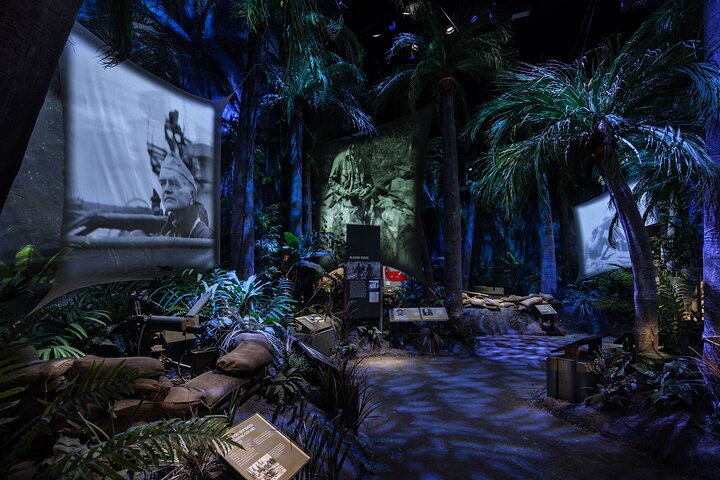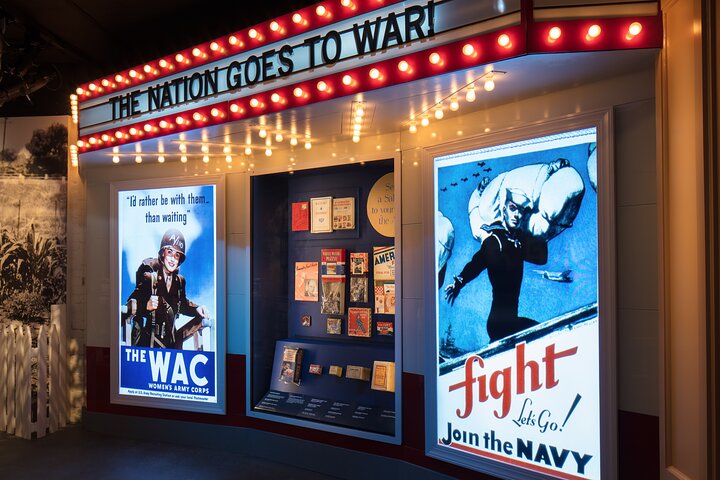Exploring History: A Day at the National WWII Museum in New Orleans
As a former city planner turned travel writer, I was drawn to the National WWII Museum in New Orleans for its unique storytelling through space. Join me as I explore this sprawling campus and uncover the rich history of America’s involvement in World War II.
A Journey Through Time: The National WWII Museum
Stepping into the National WWII Museum in New Orleans is like stepping into a time machine. As a former city planner, I have a keen eye for how spaces are organized and how they tell a story. This museum, spread across a sprawling six-acre campus, is a masterclass in storytelling through space. The moment I entered, I was greeted by the sight of soaring pavilions housing historical exhibits, each one a portal to a different era of the war. The museum’s focus is distinctly American, offering a deep dive into the United States’ involvement in World War II. While it doesn’t extensively cover the contributions of other nations, it provides a comprehensive look at the reasons behind U.S. actions during the war.
The museum is a treasure trove of information, with displays that are both educational and immersive. As I wandered through the exhibits, I was struck by the sheer amount of reading and watching required to fully appreciate the history on display. For those less familiar with the war, the museum offers a wealth of information through descriptions, quotes, and narrated videos. It’s a lot to take in, but it’s essential for understanding the human experience and the chronology of the war. The Tom Hanks-narrated 4-D film, “Beyond All Boundaries,” is a highlight, offering a well-crafted overview of the war from the U.S. perspective. The film’s special effects, including vibrating seats and atmospheric effects, make for an unforgettable experience.
The Hardware of War
For those with a penchant for military hardware, the museum does not disappoint. As I explored the exhibits, I marveled at the collection of aircraft, artillery, and other wartime equipment. The Higgins boat, a key player in the D-Day landings, was a particular highlight. The museum also features small artillery, grenades, shoulder weapons, and handguns, as well as helmets, radios, kits, and swords. While the collection may not rival the Smithsonian or other specialized museums, it offers enough to keep any military enthusiast engaged.
The layout of the museum, however, presents some challenges. The exhibits are spread across several buildings, connected by walkways and skybridges. This can make navigation a bit tricky, with some areas feeling cramped and crowded. The access to different “regions” of the war, such as the Pacific and European theaters, can be confusing, with visitors entering and exiting from the same points. This can lead to congestion, especially around popular video displays. Despite these challenges, the museum’s collection of hardware is impressive, and the interactive shows add an extra layer of engagement.
A Jewel in the Heart of New Orleans
Located just a short walk from the streetcar line, the National WWII Museum is easily accessible for anyone exploring the vibrant city of New Orleans. The museum complex includes a food court and two museum shops, offering plenty of opportunities to refuel and pick up souvenirs. The food court can get crowded, so it’s worth planning your visit around meal times to avoid the rush.
The museum is staffed by knowledgeable docents and guides, who are always on hand to answer questions and provide additional insights. Their passion for the subject matter is evident, and they add a personal touch to the experience. As I left the museum, I couldn’t help but reflect on the importance of preserving and sharing this history. The National WWII Museum is a jewel among the many historical sites around the world, offering a unique perspective on a pivotal moment in history. Whether you’re a novice or a seasoned historian, there’s something here for everyone. It’s a must-visit for anyone interested in understanding the complexities of World War II and the role the United States played in shaping the world we live in today.
















































